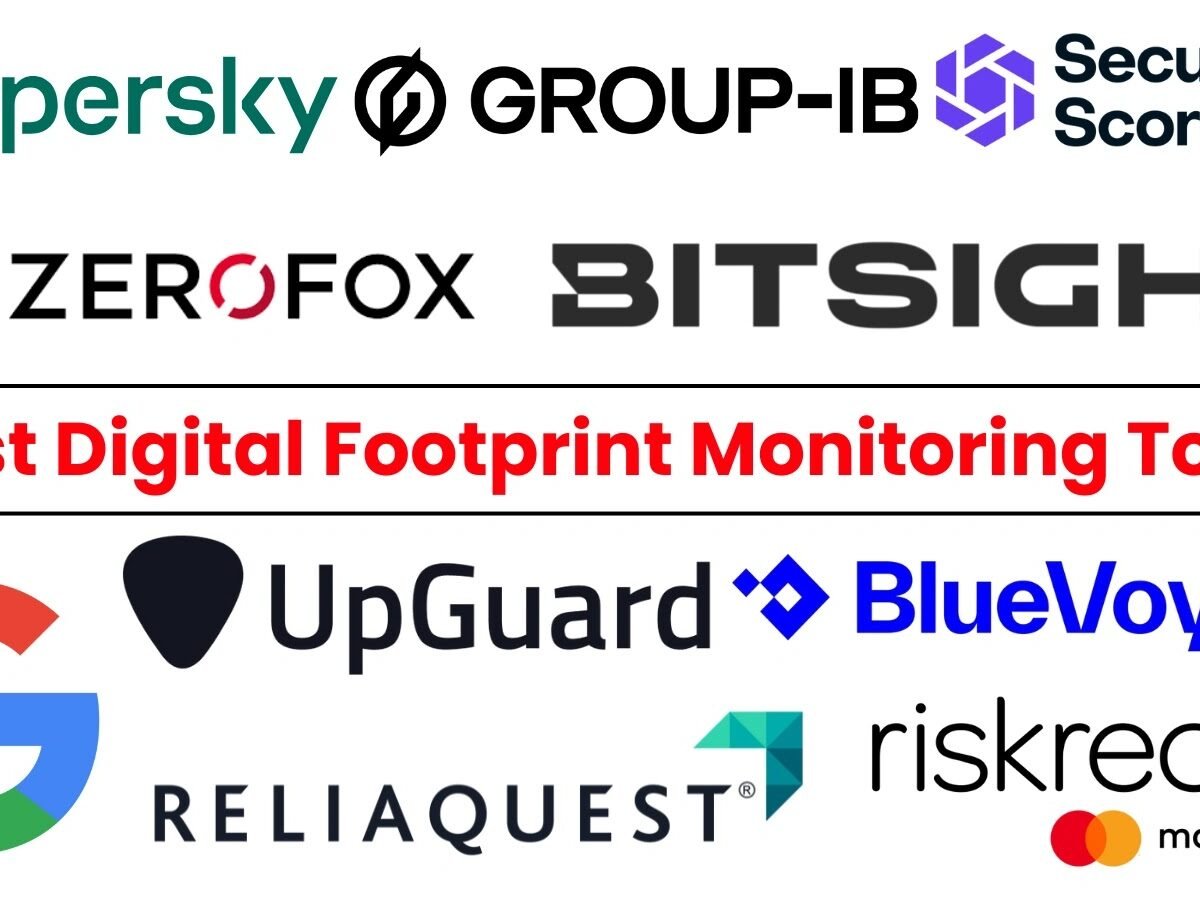Understanding Digital Footprint Monitoring Tools: A Comprehensive Guide to Protecting Your Organization
In today’s hyperconnected digital environment, businesses are navigating a landscape fraught with security threats that can significantly tarnish their online presence and reputations. From sophisticated cyberattacks and phishing campaigns to data breaches and brand impersonation, organizations must actively safeguard their digital footprint. The advent of digital footprint monitoring tools has emerged as a critical line of defense, providing organizations with the insights necessary to understand their risk exposure across various online spaces.
What Are Digital Footprint Monitoring Tools?
Digital footprint monitoring tools are designed to offer in-depth insights into an organization’s exposure to risks originating from the surface web, deep web, and dark web sources. These tools empower organizations to proactively defend against potential threats before they manifest into significant harm. Their functionality encompasses several critical tasks: identifying exposed credentials, detecting leaked data, spotting fake domains, and monitoring malicious activities targeting a brand.
As cyber risks become increasingly complex, organizations require scalable monitoring platforms that track and analyze their global digital footprint in real time. These advanced tools also enhance compliance efforts, safeguard customer trust, and contribute to comprehensive security strategies.
The Importance of Choosing the Right Tool
The landscape of digital threats is constantly evolving, making it imperative for businesses to select a monitoring tool that aligns with their specific needs. In particular, organizations should look for tools that offer robust detection capabilities, AI-driven insights, and a high degree of customization. Additionally, integration flexibility is crucial, ensuring that the chosen tool seamlessly incorporates into existing workflows and security measures.
Top 10 Digital Footprint Monitoring Tools for Organizations in 2025
As we explore the landscape of digital footprint monitoring solutions for organizations in 2025, we present an overview of the top ten tools, dissecting their specifications, features, pros and cons, and reasons to consider each option.
1. Kaspersky Digital Footprint Intelligence
Why We Picked It:
Kaspersky stands out with its comprehensive monitoring capabilities, covering open sources, underground forums, and criminal marketplaces. The platform’s integration of threat intelligence translates alerts into actionable insights, significantly increasing response speed.
Specifications & Features:
Real-time monitoring is complemented by machine learning models which accurately detect domain spoofing and phishing attempts. Its global threat intelligence and flexible integration into custom workflows make it ideal for large organizations.
Pros:
- Excellent visibility into the dark web.
- Trusted global brand recognition.
- Strong predictive intelligence capabilities.
Cons:
- Higher cost may deter smaller businesses.
- Complex setup can challenge non-technical teams.
2. ZeroFox
Why We Picked It:
ZeroFox excels in brand impersonation detection, phishing domain identification, and social media-based threat prevention. Its extensive global visibility empowers organizations to catch threats before they escalate.
Specifications & Features:
Automated protection layers span all online ecosystems, providing real-time monitoring and highly targeted alerts. The platform is designed for usability, making it easier for teams at all levels to engage.
Pros:
- Strong capabilities in protecting against brand impersonation.
- Excellent integrations for enterprise environments.
Cons:
- Higher pricing can be restrictive for budget-conscious firms.
- May require skilled analysts to extract full potential.
3. Group-IB
Why We Picked It:
Group-IB is renowned for its cybercrime investigation reputation. The platform connects exposed footprints to real adversaries, providing relevant context to alerts, which enhances decision-making.
Specifications & Features:
Deep visibility into both digital and dark web environments enables the tracking of leaked credentials and impersonation campaigns. Its AI-driven architecture identifies emerging threats effectively.
Pros:
- Exceptional capability in fraud detection.
- Strong industry focus on banking and finance.
Cons:
- May be cost-prohibitive for smaller organizations.
- Geared towards critical industries, limiting its appeal elsewhere.
4. Bitsight
Why We Picked It:
Bitsight’s unique rating system for organizations’ cybersecurity posture positions it as a leader in security ratings. It allows companies to assess risks effectively, especially regarding third-party partnerships.
Specifications & Features:
Continuous monitoring and risk assessment metrics provide users with easy-to-understand ratings. This structured reporting facilitates communication with stakeholders.
Pros:
- Strong third-party risk visibility.
- Widely accepted in various industries.
Cons:
- Limited coverage of dark web threats.
- More strategic than tactical in nature.
5. SecurityScorecard
Why We Picked It:
This tool gains attention for its unique A–F scoring mechanism, simplifying complex cyber risks for both technical and non-technical teams. It’s particularly effective in vendor management.
Specifications & Features:
Comprehensive risk categorization across various domain security aspects allows for dynamic score updates. Seamless integrations into existing workflows enhance usability.
Pros:
- Transparent risk assessment framework.
- Effective for managing vendor ecosystems.
Cons:
- Limited dark web threat coverage.
- Best suited for monitoring rather than deep threat hunting.
6. RiskRecon
Why We Picked It:
RiskRecon provides vital insights into not just an organization’s risks, but also the risks stemming from third-party vendors. Its automation capabilities streamline risk identification.
Specifications & Features:
Real-time monitoring and risk mapping allow organizations to identify and categorize exposures effectively. Its focus on actionable risk management sets it apart.
Pros:
- Excellent for supplier security monitoring.
- Prioritizes actionable insights.
Cons:
- Limited coverage of dark web activities.
- Not ideal for those needing deep attribution intelligence.
7. BlueVoyant
Why We Picked It:
BlueVoyant integrates threat intelligence seamlessly with operational defense services, covering a broad array of risks including exposed credentials and impersonation.
Specifications & Features:
Real-time threat detection and comprehensive dashboards support large-scale monitoring, making it exceptionally reliable for many industries.
Pros:
- Rich intelligence feeds.
- Managed security services fill staffing gaps.
Cons:
- Costs can be burdensome for small enterprises.
- Reliance on managed services may not suit all scenarios.
8. Google Digital Risk Protection
Why We Picked It:
Utilizing unparalleled data processing capabilities, Google’s platform effectively analyzes immense volumes of digital exposure data, making it one of the most accurate in its class.
Specifications & Features:
Integration within the Google Cloud ecosystem allows for automation and high levels of accuracy in threat detection, facilitating an organized approach to brand protection.
Pros:
- Broad data detection capability.
- Seamless integration options.
Cons:
- Potentially less customizable than dedicated solutions.
- Not ideal for organizations focusing solely on on-premises infrastructures.
9. ReliaQuest
Why We Picked It:
ReliaQuest shines through its flexibility, integrating monitoring with existing security infrastructures and offering real-time threat insights facilitated by AI.
Specifications & Features:
Collaboration-friendly design within SOC environments enhances efficiency. It’s tailored for organizations navigating diverse digital ecosystems.
Pros:
- Strong integrations with SIEM and SOAR systems.
- Focus on clarifying complex risks for all stakeholders.
Cons:
- Coverage of underground criminal channels may not compare to niche providers.
- Some training may be necessary to utilize fully.
10. UpGuard
Why We Picked It:
Recognized for its user-centric approach to digital risk management, UpGuard is especially suitable for startups seeking straightforward external monitoring solutions without a technical burden.
Specifications & Features:
Intuitive dashboards and robust vendor monitoring make it accessible to organizations without extensive cybersecurity expertise.
Pros:
- User-friendly interface.
- Cost-effective with strong return on investment.
Cons:
- Less proficient in dark web coverage.
- Limited customizability for advanced users.
By assessing the unique offerings of each digital footprint monitoring tool, organizations can make informed decisions tailored to their specific needs—whether they aim for brand protection, vendor management, or a comprehensive cybersecurity posture. Adopting the right tools not only prevents reputational damage but also fortifies compliance and enhances overall security strategies in a rapidly evolving digital landscape.





